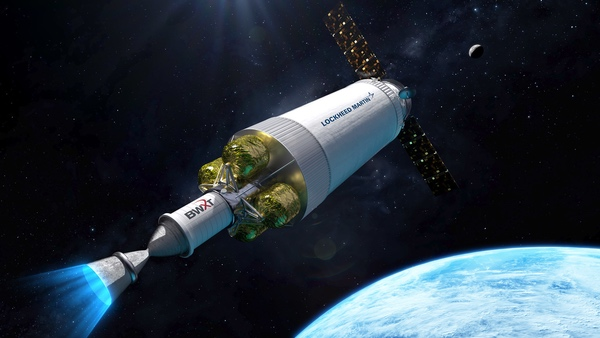You are using an out of date browser. It may not display this or other websites correctly.
You should upgrade or use an alternative browser.
You should upgrade or use an alternative browser.
Nuclear Powered Spacecraft
- Thread starter Antonio
- Start date
lost_treasures
ACCESS: Restricted
- Joined
- 14 September 2022
- Messages
- 15
- Reaction score
- 8
Ok then, mea culpa, I only looked at the DRACO pseudo "timetable" on the GE website from a link that was sent in this threadA mid-30's ship project is literally within the publicly stated time table? NASA expects a Mars manned flyby sometime in the late 2030's or early 2040's.
Kat Tsun
I really should change my personal text
- Joined
- 16 June 2013
- Messages
- 1,126
- Reaction score
- 1,258
Ok then, mea culpa, I only looked at the DRACO pseudo "timetable" on the GE website from a link that was sent in this threadA mid-30's ship project is literally within the publicly stated time table? NASA expects a Mars manned flyby sometime in the late 2030's or early 2040's.
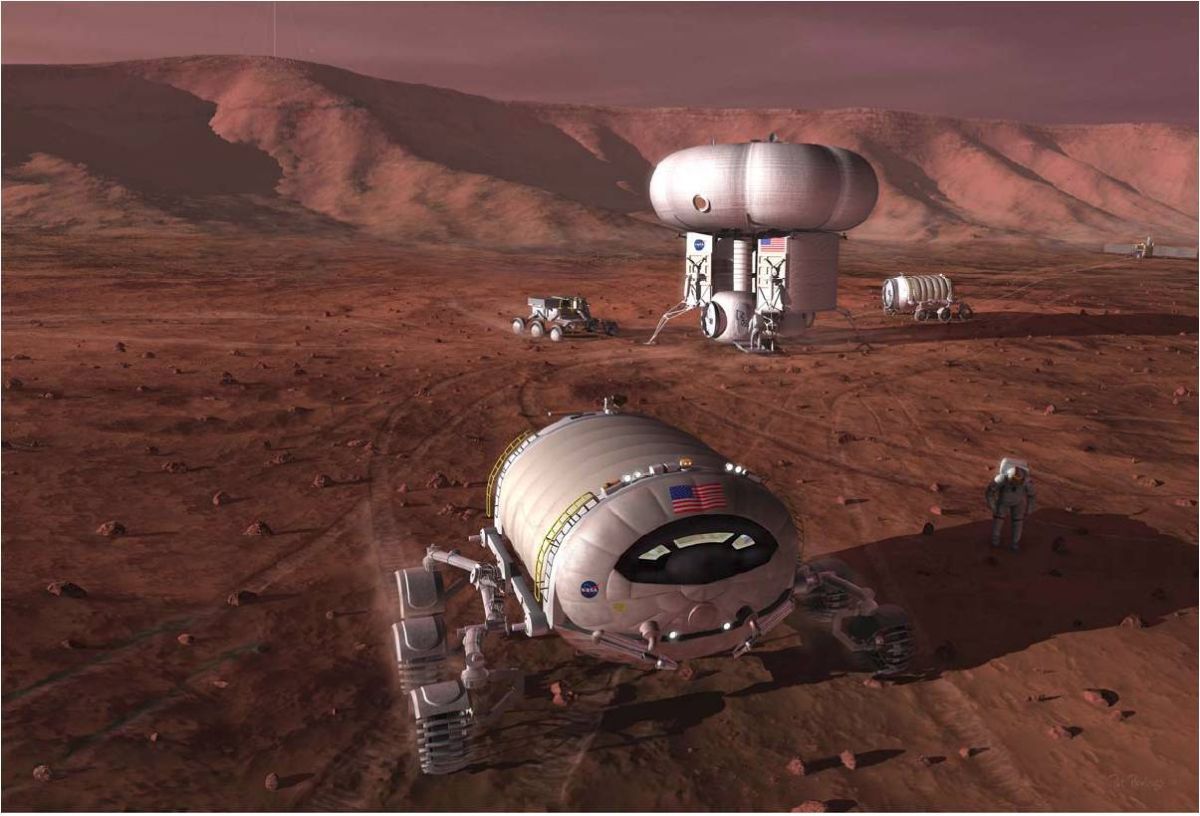
NASA shows off early plans to send astronauts to Mars for 30 days
The agency also wants feedback about its concept.

Update: NASA Seeks Comments on Moon to Mars Objectives by June 3
Editor’s Note: NASA has extended the comment period on its Moon to Mars Objectives to 5 p.m. EDT on Friday, June 3. Comments were previously set to close on Tuesday, May 31. While the agency is working on a tight deadline to finalize the objectives this fall, numerous respondents requested...
Here is a news article about NASA's current plans.
It's very long-term and a lot of things aren't clear, like what rockets will be used and such, but at least NASA is finally industrializing space and Artemis is the first step in that: to build a refueling and construction depot/staging ground far from Earth gravity and where the radiation from interplanetary nuclear rockets won't injure robots, satellites, or people in orbit. The flyby is planned for "the next 20 years" and there is probably wiggle room of +/- five years on that.
Main problems will be stuff like Starship/Human Landing System are shaping like they're going to be far behind schedule, if not DOA, at the moment. That will increase the timetable since NASA will need to divert or increase SLS launches to supporting the establishment of a surface base on the Moon, re-do the new Lunar lander competition, or something else. There's a lot of hurdles that SpaceX hasn't cleared, like a basic orbital flight, while NASA and ULA have at least shown their half of the work is up to par.
Last edited:
Forest Green
ACCESS: Above Top Secret
- Joined
- 11 June 2019
- Messages
- 5,093
- Reaction score
- 6,674
It seems to say astronauts on Mars by the late 2030s.
Forest Green
ACCESS: Above Top Secret
- Joined
- 11 June 2019
- Messages
- 5,093
- Reaction score
- 6,674
Surely they'll have some shielding.
lost_treasures
ACCESS: Restricted
- Joined
- 14 September 2022
- Messages
- 15
- Reaction score
- 8
True, Although beyondOk then, mea culpa, I only looked at the DRACO pseudo "timetable" on the GE website from a link that was sent in this threadA mid-30's ship project is literally within the publicly stated time table? NASA expects a Mars manned flyby sometime in the late 2030's or early 2040's.

NASA shows off early plans to send astronauts to Mars for 30 days
The agency also wants feedback about its concept.www.space.com

Update: NASA Seeks Comments on Moon to Mars Objectives by June 3
Editor’s Note: NASA has extended the comment period on its Moon to Mars Objectives to 5 p.m. EDT on Friday, June 3. Comments were previously set to close on Tuesday, May 31. While the agency is working on a tight deadline to finalize the objectives this fall, numerous respondents requested...www.nasa.gov
Here is a news article about NASA's current plans.
It's very long-term and a lot of things aren't clear, like what rockets will be used and such, but at least NASA is finally industrializing space and Artemis is the first step in that: to build a refueling and construction depot/staging ground far from Earth gravity and where the radiation from interplanetary nuclear rockets won't injure robots, satellites, or people in orbit. The flyby is planned for "the next 20 years" and there is probably wiggle room of +/- five years on that.
Main problems will be stuff like Starship/Human Landing System are shaping like they're going to be far behind schedule, if not DOA, at the moment. That will increase the timetable since NASA will need to divert or increase SLS launches to supporting the establishment of a surface base on the Moon, re-do the new Lunar lander competition, or something else. There's a lot of hurdles that SpaceX hasn't cleared, like a basic orbital flight, while NASA and ULA have at least shown their half of the work is up to par.
Still there are a lot of variables in the equation, microgravity, micro-meteroids, food and water (can't bring gourmet meals all the way like on the iss) etcSurely they'll have some shielding.
Kat Tsun
I really should change my personal text
- Joined
- 16 June 2013
- Messages
- 1,126
- Reaction score
- 1,258
Surely they'll have some shielding.
If we knew the answers to half the questions of long duration space travel outside the Earth-Moon system, we'd have landed on Mars by now. Right now we don't even know what 500 days of space duration will look like and the entire sample size of anyone staying over ~400 days (the length of the shortest possible Mars mission) is literally "one dude". So there are not exactly much data on what happens, how well you can cope with even 1/3rd g on landing, etc. etc.
The main issue with Artemis I'd think is that, being within Earth's shadow, the Moon receives substantial radiation protection. So a permanent Moon base may not be super accurate as to what sort of radiation shielding is necessary for a Mars mission. Whether that just means you need to hang out for 600 days instead of 400 to receive a similar dose, who knows, though. Only one real way to find out.
True, Although beyondOk then, mea culpa, I only looked at the DRACO pseudo "timetable" on the GE website from a link that was sent in this threadA mid-30's ship project is literally within the publicly stated time table? NASA expects a Mars manned flyby sometime in the late 2030's or early 2040's.

NASA shows off early plans to send astronauts to Mars for 30 days
The agency also wants feedback about its concept.www.space.com

Update: NASA Seeks Comments on Moon to Mars Objectives by June 3
Editor’s Note: NASA has extended the comment period on its Moon to Mars Objectives to 5 p.m. EDT on Friday, June 3. Comments were previously set to close on Tuesday, May 31. While the agency is working on a tight deadline to finalize the objectives this fall, numerous respondents requested...www.nasa.gov
Here is a news article about NASA's current plans.
It's very long-term and a lot of things aren't clear, like what rockets will be used and such, but at least NASA is finally industrializing space and Artemis is the first step in that: to build a refueling and construction depot/staging ground far from Earth gravity and where the radiation from interplanetary nuclear rockets won't injure robots, satellites, or people in orbit. The flyby is planned for "the next 20 years" and there is probably wiggle room of +/- five years on that.
Main problems will be stuff like Starship/Human Landing System are shaping like they're going to be far behind schedule, if not DOA, at the moment. That will increase the timetable since NASA will need to divert or increase SLS launches to supporting the establishment of a surface base on the Moon, re-do the new Lunar lander competition, or something else. There's a lot of hurdles that SpaceX hasn't cleared, like a basic orbital flight, while NASA and ULA have at least shown their half of the work is up to par.
Still there are a lot of variables in the equation, microgravity, micro-meteroids, food and water (can't bring gourmet meals all the way like on the iss) etcSurely they'll have some shielding.
I hope they give the astronauts little food/animal shaped jellies and aspics with vegetables, carbs, and meat contained inside the gelatin.
Last edited:
Forest Green
ACCESS: Above Top Secret
- Joined
- 11 June 2019
- Messages
- 5,093
- Reaction score
- 6,674
Algae farm.
Forest Green
ACCESS: Above Top Secret
- Joined
- 11 June 2019
- Messages
- 5,093
- Reaction score
- 6,674
Algae is edible too.
lost_treasures
ACCESS: Restricted
- Joined
- 14 September 2022
- Messages
- 15
- Reaction score
- 8
Algae for biofuel might be an interesting contender considering the miserable amount of sunlight on mars but there still is the oxidiser problem, which is needed to keep the engine runningThere is that melanistic fungi in reactors to look at too. Algae for biofuel. Kerosene needs no reefers.
Forest Green
ACCESS: Above Top Secret
- Joined
- 11 June 2019
- Messages
- 5,093
- Reaction score
- 6,674
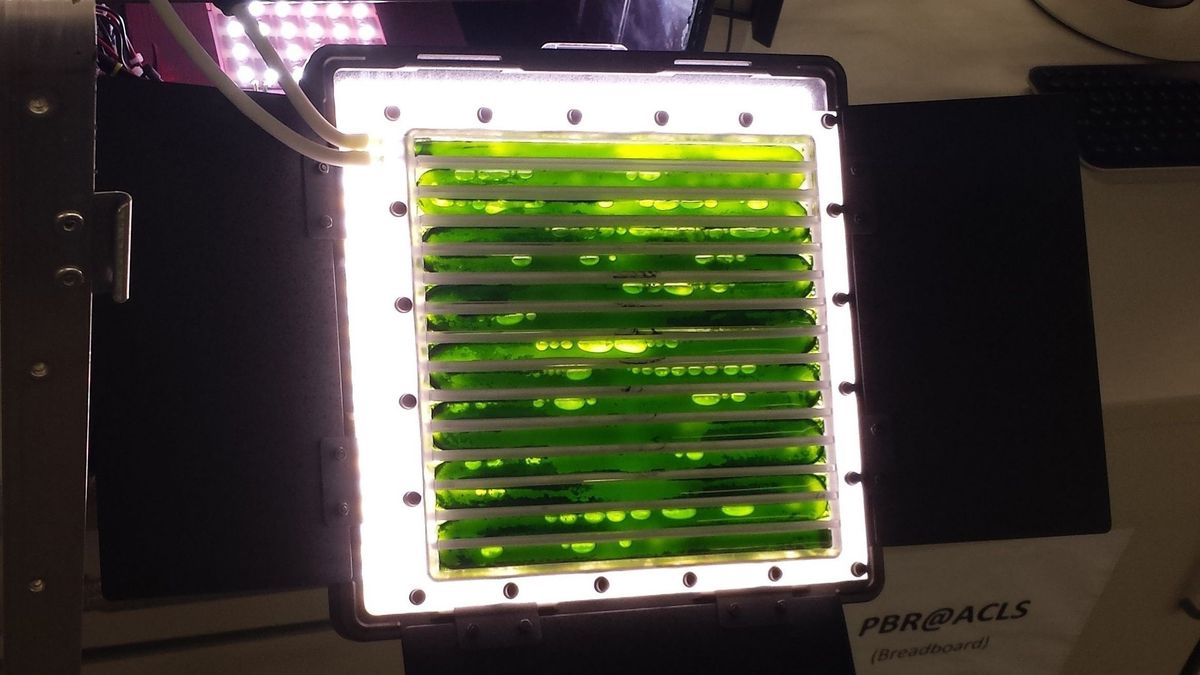
Algae 'Bioreactor' on Space Station Could Make Oxygen, Food for Astronauts
An algae-powered bioreactor, called the Photobioreactor, arrived at the International Space Station on May 6 and represents a major step toward so-called closed-loop life-support systems, which could

Clever space algae could be the key to getting humans to Mars
If you are spending years on a spaceship, you can’t bring everything you need with you – you’ll need to grow it yourself. That's where algae comes in handy
Alage and fungi can work together

 phys.org
phys.org
Laughing gas and kerosene for ascent?

Researchers have discovered a new type of coexistence between algae and fungi
Researchers from the Institute of Botany, Czech Academy of Sciences, have described the symbiotic relationship between fungi and algae that science has largely overlooked until now. The coexistence of algae and corticioid basidiomycetes, which are common in temperate forests, has been given a...
Laughing gas and kerosene for ascent?
Last edited:
Forest Green
ACCESS: Above Top Secret
- Joined
- 11 June 2019
- Messages
- 5,093
- Reaction score
- 6,674
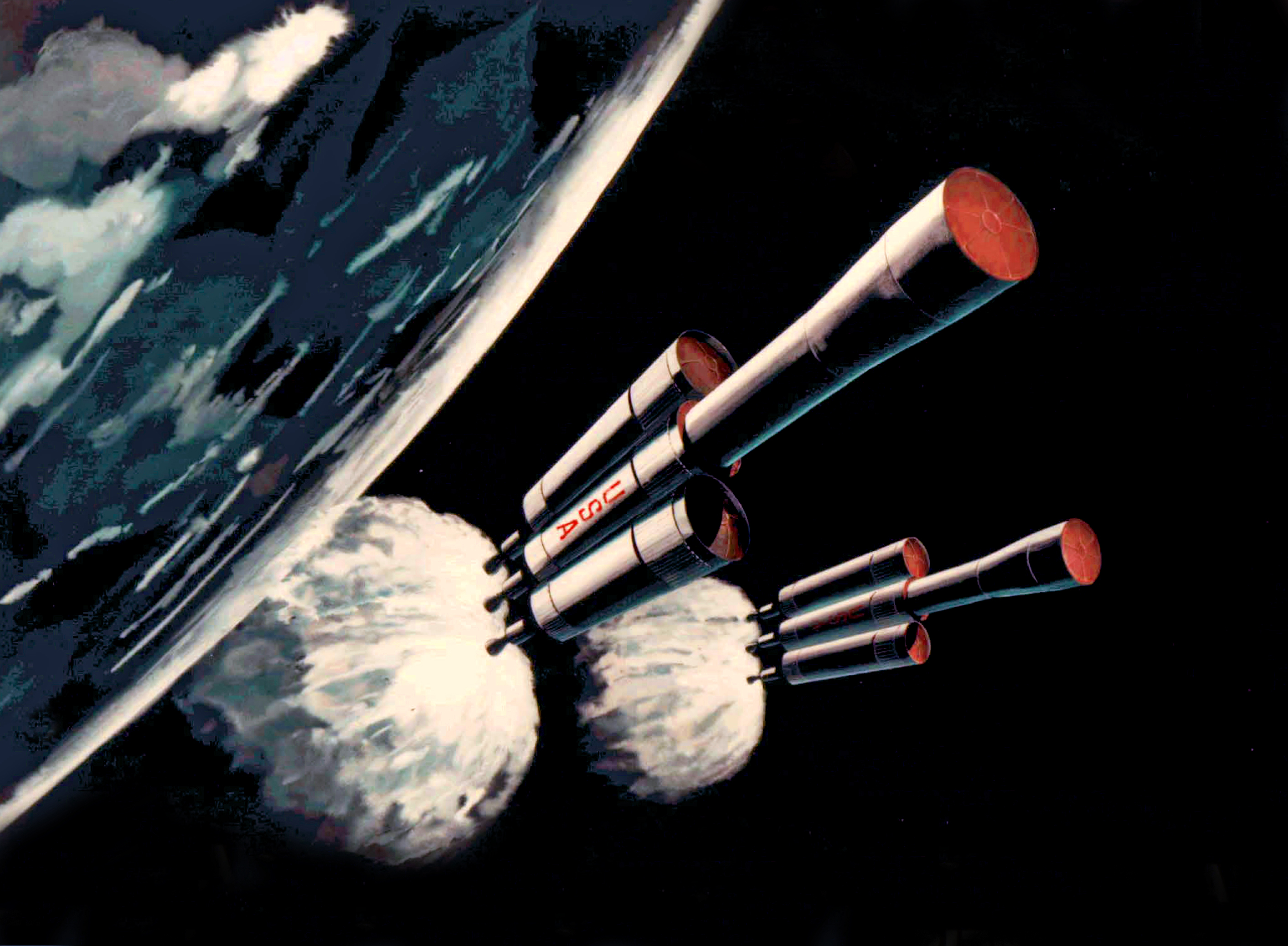
Wernher von Braun's forgotten mission to Mars
Apollo’s mastermind Wernher von Braun planned a crewed mission to the Red Planet by the 1980s. But what actually happened was a different story, writes former NASA scientist David Baker.
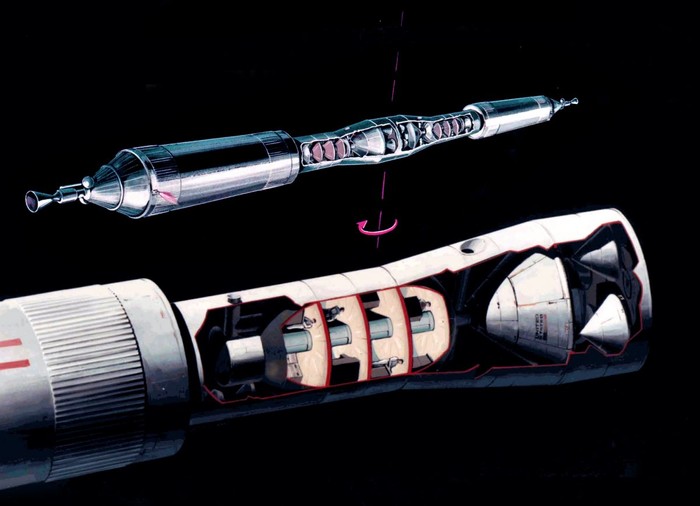
Forest Green
ACCESS: Above Top Secret
- Joined
- 11 June 2019
- Messages
- 5,093
- Reaction score
- 6,674
Forest Green
ACCESS: Above Top Secret
- Joined
- 11 June 2019
- Messages
- 5,093
- Reaction score
- 6,674
Scott Kenny
ACCESS: Above Top Secret
- Joined
- 15 May 2023
- Messages
- 5,996
- Reaction score
- 4,842
The hydrogen itself wasn't notably radioactive. The problem was that the heat and flow rates were enough to take pieces of the fuel cladding and eventually the fuel proper out of the engine/reactor. And those parts were highly radioactive.I'm confident that the answer to the following question is buried somewhere in the masses of nuclear-powered spacecraft documentation available on the internet or in bookstores (and a considerable amount available via links from this excellent website). I am, however, of a rather lazy nature (;D), so I decided to take a short-cut and pose the question here:
Just how radioactive is the exhaust from a solid-core, nuclear-thermal rocket (e.g. NERVA) using hydrogen as reaction mass ? Hydrogen is a lightweight, simple molecule, and it spends only a short time in the reactor, so it shouldn't get all that radioactive. On the other hand, there's probably some erosion of the reactor's moderator going on, contaminating the exhaust with radioactive carbon, beryllium and whatnot.
The US (and probably the USSR) tested NERVA-type engines in the past, so I assume that some measurements were made ? Also, the very fact that the were tested would seem to indicate that the exhaust wasn't glow-in-the-dark radioactive ???.
Regards, and thanks in advance,
Thomas L. Nielsen
Denmark
- Joined
- 21 April 2009
- Messages
- 13,170
- Reaction score
- 6,056
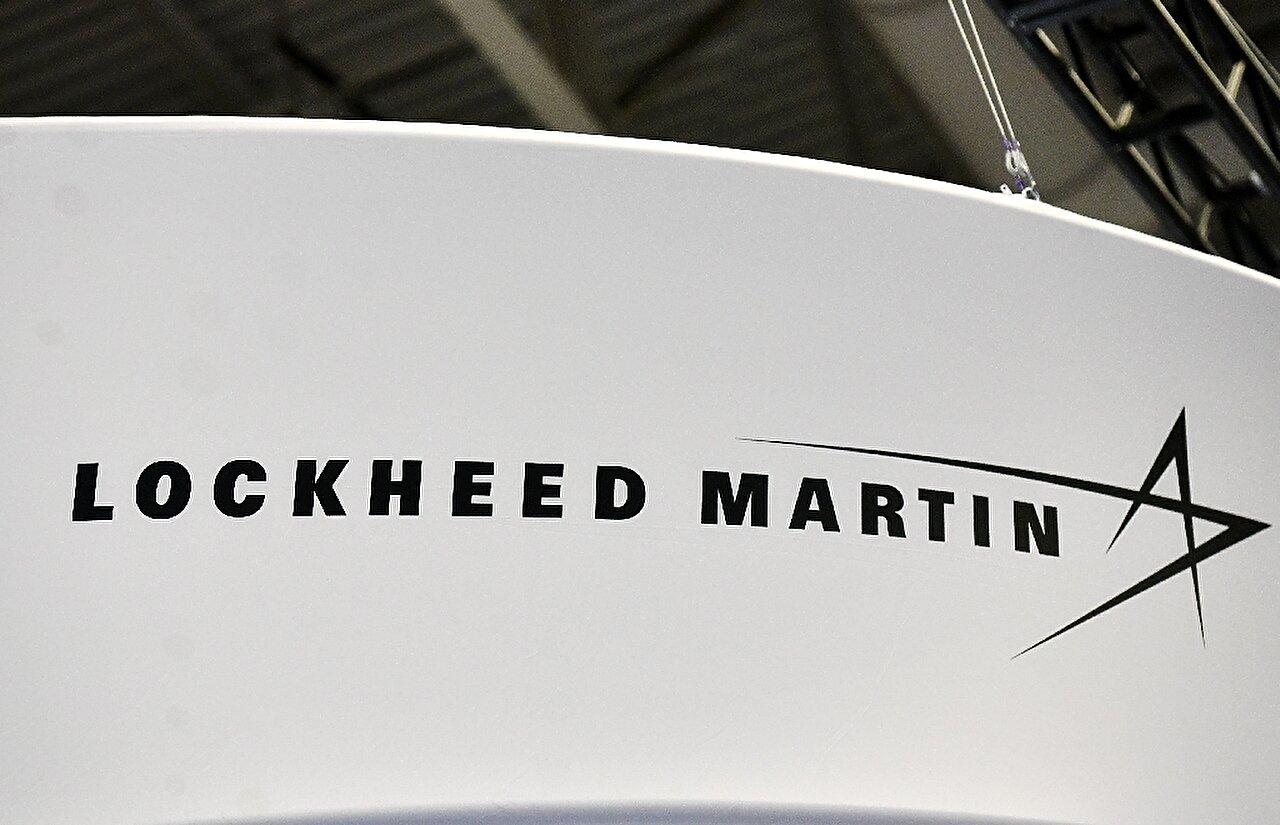
NASA picks Lockheed Martin to develop nuclear rocket
NASA and the US military said Wednesday they had selected defense contractor Lockheed Martin to develop a nuclear powered rocket, with a view to using the technology for missions to Mars.

Wernher von Braun's forgotten mission to Mars
Apollo’s mastermind Wernher von Braun planned a crewed mission to the Red Planet by the 1980s. But what actually happened was a different story, writes former NASA scientist David Baker.www.skyatnightmagazine.com

How much gravity would that spin produce??
Scott Kenny
ACCESS: Above Top Secret
- Joined
- 15 May 2023
- Messages
- 5,996
- Reaction score
- 4,842
Mercury vapor driving the turbine?!?Aerojet General SNAP-8 Fission Reactor
Thermal Power: 300 kW(t)
Electrical Power: 30 kW(e)
Mass: 300 lbs (reactor); 1500 lbs (unshielded system)
Useful Life: 12 months.
Reactor Outlet Temperature: 1,300°F
Mercury Boiling Temperature: 1,100°F
Radiator Temperature: 700°F
Notes: Joint NASA/AEC project designed to develop a 30 to 60 KW(e) reactor with a specific weight of 50 lb/kw(e) and a 10,000 hour operational lifetime. Effectively a scale-up of the SNAP-2 system. The official objective was:
<blockquote></blockquote>“The ultimate objective of the SNAP-8 program is to design and develop a 30-kw Electrical Generating System for use in various space missions. The power source for this system will be a nuclear reactor furnished by the AEC. The SNAP-8 system will use a eutectic mixture of sodium and potassium (NaK) as the reactor coolant; the system will operate on a Rankine cycle with mercury as the working fluid for the turbogenerator. The SNAP-8 system will be lightweight and highly reliable. It will be launched from a ground base and will operate unattended at full power for a minimum of 10,000 hours. After the system is placed in orbit, both activation and shutdown may be accomplished by ground command.”
Two complete reactors were built during the SNAP-8 program:
SNAP-8 Experimental Reactor (S8ER), which was ground tested in an inerted containment vessels for 12,000 hours and operated for 1 year at power and temperature. Used non-flight hardware. Was a significant improvement in technology – for the same amount of unshielded reactor mass as a SNAP-10A system, S8ER could deliver over 6 times the energy.
SNAP-8 Developmental Reactor (S8DR), which was ground tested for 7,000 hours at power levels from 600 to 1,000 kW(t) using flight-type reactor components and neutron shielding.
References:
Novel Power Sources for Survival Shelters (Contract OCD-OS-62-243) March 1963 (3.9 MB PDF)
Quarterly Progress Report to the Joint Committee on Atomic Energy, April-June 1958. U.S. Atomic Energy Commission
AEC Annual Report to Congress, 1961.
Summary of Snap Nuclear Space Power Systems, E.B. BAUMEISTER
Report No. 0390-04-6 Development of SNAP-8 Nuclear Power Conversion System Model AGAN 0010 (7 February 1962)
Technological Implications of SNAP Reactor Power System Development for Future Space Nuclear Power Systems Activities by R.V. Anderson (9.1 MB PDF)
SNAP Overview by Glen Schmidt (7 February 2011) (7.39 MB PDF)
An Appraisal of the Advanced Electric Space Power Systems, May 1962 by Lewis Research Center (NASA)
-----------------------
Sadly...if I had known that moron Frank Wolf was going to destroy NTRS, I would have made all the references I found mirrored on my website as well.
Yeah, find something less noxious to use when the launching rocket decides to rapidly disassemble itself.
I'm also not too sure about the liquid metal cooling cycle. How do you get the reactor safely to operating temperatures with a solid metal core and then molten core but solid coolant pumps?
That was before we understood chronic radiation dosages.Hindsight being 20/20... isn't the idea of a spaceship that leaves a trail of hundreds of nuclear explosions, a somewhat ludicrous idea?
Ah, yes, Doctor Zubrin's insanity.
NSWRs are good for ships that weight some 5000 tons or more, at minimum thrust an NSWR will push one of those around at about 2.5m/s/s.
Strap a guidance system and a 3m^3 capacity fuel tank onto an NSWR and you have an interplanetary missile that does 280+m/s/s at ignition and accelerates to 430m/s/s at fuel exhaustion (roughly 25 hours after launch, 3000seconds).
Time to Mars is indicative of total delta-vee capabilities and acceleration potential. ~96 hours to Mars is roughly 1 gee constant acceleration.Plans and speeches are all nice and well but to me nuclear propulsion is still a pipe dream, sure one can theorize on Isp and ttm (time to mars, seems to be a common measure these days even though it makes zero sense, since the engine doesn't go to mars by itself and trajectories vary), but we have yet to see any serious funding/project/political will that could lead to nuclear becoming relevant again. I highly doubt that any kind of nuclear engine will be launched as long as there isn't a clear race to get somewhere first, on the other hand, with NASA's lunar plans becoming clearer by the day it seems plausible that the first nuclear reactor we will see will power a static moonbase.
Forest Green
ACCESS: Above Top Secret
- Joined
- 11 June 2019
- Messages
- 5,093
- Reaction score
- 6,674
Impossible to say without knowing length and angular velocity.How much gravity would that spin produce??
Carlo Rubbia's approach:

 infinite.mit.edu
infinite.mit.edu
So now you can make devices which are critical with grams of material, not kilograms. Remember, in the Nerva, you needed one ton of highly fissile bomb-grade uranium. Here, with 20 grams of americium, you're critical. In this continued medium....
So it is possible, with this technology, to make a critical reactor which will operate with a very small amount of material. Remember, 1 milligram a square centimeter is 10 grams per square meter of surface. We are talking about probably 100 square meters, for this mission, so we're talking about between 5 and 10 kilograms [INAUDIBLE] of americium to burn. Which is not very much.
In fact, americium has the same properties as uranium 230-- plutonium 238, which is used now on Cassini mission and was on Voyager. And usually you had more than these kilograms on it. So it's deja vu, as one says in French.
Now, of course, americium 242m is an ideal device. This is a cross-section.
Notice the cross-section drops, when a temperature goes up. This is the temperature of your Hohlraum, 1,000 degrees 2,000 degrees. So you're running here in this region that correspond to those energies. Capture is very high, fission very high, capture very small. Big ratio between the two.
InfiniteMIT | Carlo Rubbia, "New Approach to Nuclear Space Propulsion” - MIT Media Lab Colloquium Series
The InfiniteMIT site is a collection of videos that create a vivid portrait of an institution that is continually changing the way we live and work. Interviews with legendary change-makers, historic footage from the MIT Museum collection, unforgettable lectures, commencement speeches, and symposia.
So now you can make devices which are critical with grams of material, not kilograms. Remember, in the Nerva, you needed one ton of highly fissile bomb-grade uranium. Here, with 20 grams of americium, you're critical. In this continued medium....
So it is possible, with this technology, to make a critical reactor which will operate with a very small amount of material. Remember, 1 milligram a square centimeter is 10 grams per square meter of surface. We are talking about probably 100 square meters, for this mission, so we're talking about between 5 and 10 kilograms [INAUDIBLE] of americium to burn. Which is not very much.
In fact, americium has the same properties as uranium 230-- plutonium 238, which is used now on Cassini mission and was on Voyager. And usually you had more than these kilograms on it. So it's deja vu, as one says in French.
Now, of course, americium 242m is an ideal device. This is a cross-section.
Notice the cross-section drops, when a temperature goes up. This is the temperature of your Hohlraum, 1,000 degrees 2,000 degrees. So you're running here in this region that correspond to those energies. Capture is very high, fission very high, capture very small. Big ratio between the two.
Scott Kenny
ACCESS: Above Top Secret
- Joined
- 15 May 2023
- Messages
- 5,996
- Reaction score
- 4,842
Americium has pretty short half-lives, which means it is very radioactive and also means it will burn up very quickly.Carlo Rubbia's approach:

InfiniteMIT | Carlo Rubbia, "New Approach to Nuclear Space Propulsion” - MIT Media Lab Colloquium Series
The InfiniteMIT site is a collection of videos that create a vivid portrait of an institution that is continually changing the way we live and work. Interviews with legendary change-makers, historic footage from the MIT Museum collection, unforgettable lectures, commencement speeches, and symposia.infinite.mit.edu
So now you can make devices which are critical with grams of material, not kilograms. Remember, in the Nerva, you needed one ton of highly fissile bomb-grade uranium. Here, with 20 grams of americium, you're critical. In this continued medium....
So it is possible, with this technology, to make a critical reactor which will operate with a very small amount of material. Remember, 1 milligram a square centimeter is 10 grams per square meter of surface. We are talking about probably 100 square meters, for this mission, so we're talking about between 5 and 10 kilograms [INAUDIBLE] of americium to burn. Which is not very much.
In fact, americium has the same properties as uranium 230-- plutonium 238, which is used now on Cassini mission and was on Voyager. And usually you had more than these kilograms on it. So it's deja vu, as one says in French.
Now, of course, americium 242m is an ideal device. This is a cross-section.
Notice the cross-section drops, when a temperature goes up. This is the temperature of your Hohlraum, 1,000 degrees 2,000 degrees. So you're running here in this region that correspond to those energies. Capture is very high, fission very high, capture very small. Big ratio between the two.
Forest Green
ACCESS: Above Top Secret
- Joined
- 11 June 2019
- Messages
- 5,093
- Reaction score
- 6,674
Forest Green
ACCESS: Above Top Secret
- Joined
- 11 June 2019
- Messages
- 5,093
- Reaction score
- 6,674
Forest Green
ACCESS: Above Top Secret
- Joined
- 11 June 2019
- Messages
- 5,093
- Reaction score
- 6,674
Forest Green
ACCESS: Above Top Secret
- Joined
- 11 June 2019
- Messages
- 5,093
- Reaction score
- 6,674
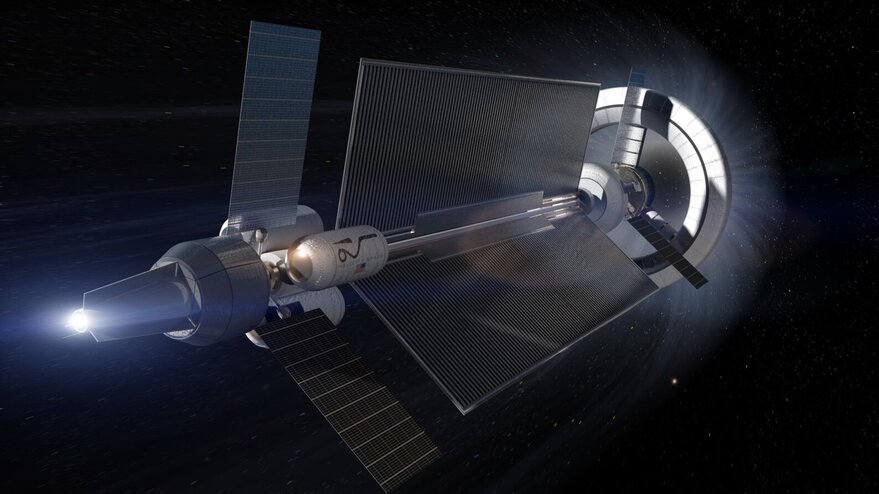
Lockheed Martin Ventures invests in Helicity Space
Helicity Space, a California startup developing fusion engines for spaceflight, announced an investment April 2 from Lockheed Martin Ventures.
 spacenews.com
spacenews.com
Last edited:
Similar threads
-
USAF interplanetary spacecraft concept using SPUR
- Started by Triton
- Replies: 15
-
General Electric Mars Mission Study July 19, 1967.
- Started by Michel Van
- Replies: 4
-
-
Interplanetary Travel Besides the Moon Projects
- Started by panzerfeist1
- Replies: 1
-

